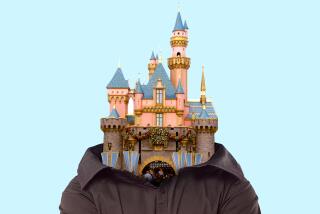Small Theme Parks Still Riding High
PITTSBURGH — There was a time when Andy Quinn went skiing every year with a close-knit group of families that collectively owned 15 amusement parks. They hit the slopes by day and talked business at night.
But these days, Quinn, a 53-year-old community relations director at Kennywood -- one of several parks his family jointly owns with another family -- has fewer companions during the weeklong outings.
“We still do it, but there’s only about four parks that are represented now,” he said. “Of the 15, almost all those have either gone out of business or been eaten by Six Flags.”
Six Flags Inc. built an empire by snapping up facilities across the country in the 1990s. Now the New York-based company, struggling with debt and sagging attendance, is looking to sell some of the 30 amusement and water parks it owns.
Some small parks that remain in family hands, meanwhile, are surviving and even prospering, largely because their owners are closely attuned to the interests of their customers, industry insiders say.
They also tend to have shorter lines, more reasonable ticket prices and friendly, long-term relationships with local people who visit repeatedly -- unlike tourists who make one-off trips to major theme parks, they say.
“The family-owned parks were always the backbone of our industry,” said Gary Slade, editor of the Arlington, Texas-based trade publication Amusement Today. “Do we have less numbers? Yes. But are they going away? No, they have been here and they will continue to be here.”
He said family-owned parks probably would carry on as long as they continued to invest in their facilities.
Amusement parks first sprang up in the 19th century on the East Coast, with facilities built at the end of trolley lines, and evolved in the 1950s with the introduction of large, fantasy-based theme parks pioneered by Walt Disney.
“We still have a number of family parks in the U.S., but the numbers are not as strong as they were 10 years ago,” said Slade, noting that some parks had been bought or sold to property developers while others closed for lack of family members to take over the business, among other reasons.
Nearly 75% of the 320 amusement and theme parks in the U.S. draw less than half a million people annually -- a category that includes family-owned facilities, according to the International Assn. of Amusement Parks and Attractions, a trade group.
Small parks continue to appeal to customers because they create a “more intimate experience for visitors,” group spokeswoman Beth Robertson said.
“Oftentimes their lines are shorter and often our smaller parks focus on family entertainment at reasonable prices,” she said. Kennywood, located in West Mifflin, Pa., charges $28.95 for a single-day ticket at the gate, while a similar pass at Disneyland costs $59.
The parks also may be near residential areas, making them particularly accessible, Robertson said.
Rob Norris, chairman of Seabreeze Park in Rochester, N.Y., said that the U.S. market was virtually saturated with large amusement parks, but that there was still room for smaller parks, particularly in second-tier cities such as Rochester.
“We offer a different product,” he said. “I think our biggest competition is for free time.”
Norris said small-park owners who operate their businesses could make decisions quickly and were very in tune with customers.
“The family-owned parks I know of are doing very well financially, sometimes better than the big parks,” said Norris, whose family has owned Seabreeze for 102 years.
He said some had expanded over the last decade by adding water parks and entertainment centers that include miniature golf courses and go-cart tracks.
Although there are no figures for the family-owned segment of the amusement and theme park business, the overall industry has grown substantially in recent years.
A total of 335 million people visited amusement and theme parks in the U.S. last year, up from 317 million in 2000 and 253 million in 1990. Total revenue jumped to $11.2 billion last year from $9.6 billion in 2000 and $5.7 billion in 1990, according to the industry trade group.
Kennywood is no longer a mom-and-pop business, said Quinn, who added that the park and three others co-owned by his family bring in a total of $80 million to $120 million annually.
Attendance at the park has been flat at more than 1 million people annually for the last four or five years, mainly because of the stagnant regional economy and unusually hot weather last summer, he said.
But local people are extraordinarily loyal to Kennywood, partly because they have visited for generations, and the park plans to expand, Quinn said.
“They feel comfortable here,” he said.
Kennywood, which first opened in 1898, has three wooden roller coasters, all built in the 1920s.
But the park has changed with the times by introducing new rides, said Quinn, a 35-year veteran of the business.
“We bring a sense of history to the industry, and we make sure and we remind them that the industry just didn’t start when Disney started or just didn’t start when Six Flags started,” he said.
More to Read
Inside the business of entertainment
The Wide Shot brings you news, analysis and insights on everything from streaming wars to production — and what it all means for the future.
You may occasionally receive promotional content from the Los Angeles Times.










